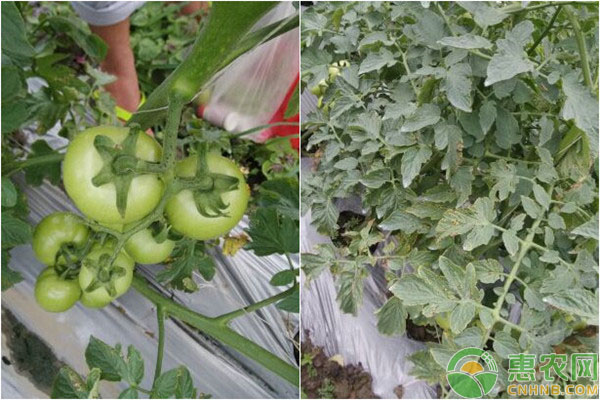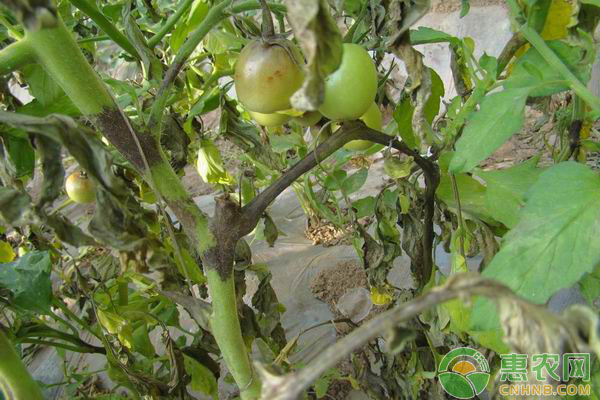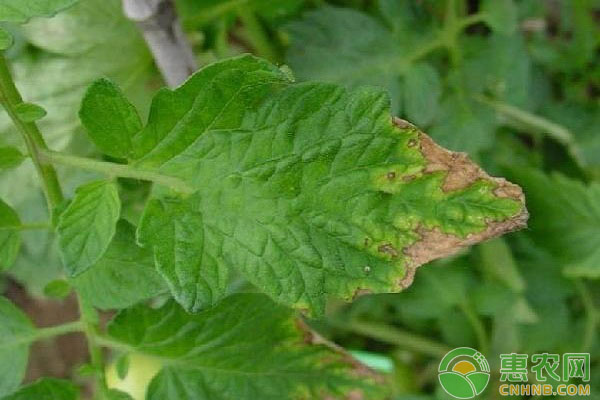Tomato tomatoes are a common vegetable product, and many farmers have grown it. However, during the planting process, there may be problems in the leaves of the tomato, which seriously affect the quality and yield of the tomato, thus affecting the economic benefits of the farmers. Then, what are the reasons for the abnormality of the tomato leaves? What are the prevention measures?

1. Small white round spots appear on the leaves
1.1 Reasons for spots
This disease is a spot disease caused by tomato shell needle infection. Bacteria can spend the winter in the soil or soil, and next year it will prolong in warm, humid or rainy weather. Main symptoms: When I was infected for the first time, I had small round water at the bottom of the leaves, slowly dark brown in the front and back edges of the leaves, a central gray circle, and many dimples. Small dots, then small dots merge with the big dry spots. In severe cases, the diseased tissue will fall off into perforations, even the lower part of the blade will be completely dry.
1.2 Control measures
One is to choose seeds that do not carry germs. After 52 ~ 54 °C warm water, 30 minutes before sowing, then add cold water temperature to 20 ~ 30 °C, soak the seeds for 3 ~ 4 h, remove excess water and discharge, and place the seeds under 25 °C conditions. The second is the sterilization of smoke. Before planting, use 250 g of sulfur-containing powder + 500 g of sawdust, press the 110-m2 canopy, divide it into several places, and then light the enclosed room at night. After planting, 45% of fumigation fumigation is used at 3750 ~ 4500g / hm2, and smoked for hours to one night. Third, drug control. Spray early onset 50% sulfur suspending agent or kill 50% anti-virus WP, or copper ec 500 times solution, 20% or 75% chlorothalonil WP, can kill or 77% wettable powder 500 ~ 600 times liquid, such as spray every 7 ~ 10 d, spray 2 ~ 3 times in a row to achieve good control effect.

2. The leaves are yellow and fall down.
2.1 Reasons for leaf yellow
This disease belongs to a fungal disease, namely leaf mold. It is caused by the infection of yellow spores, while the bacteria overwinter, hyphae, mycelium and spores on the diseased body or seed. When the lesion occurs, the leaves in the lower part of the tomato begin to turn yellow and both sides turn yellow. When the humidity is high, the back of the blade has a grayish white mold, and when the blade is severe, the blade will fall off. Leaf mold mainly harms tomato leaves and grows upward from the lower leaves. The main cause of this lesion is the high humidity in the greenhouse.
2.2 Prevention and control measures.
First, strengthen ventilation and humidity management. Even on a cloudy day, it is necessary to keep the humidity inside the shed to reduce the humidity in the greenhouse. At the same time, when planting, cover the cover with the roof, properly control the water, strengthen the ventilation, and prevent the soil and air humidity from being too high. The second is the choice of resistant varieties. Tomatoes from Israel (R-144), 516, 189, and dani ara introduced in the Netherlands have many varieties of mildew resistance, and they introduce Gloria, Red Flag, Tibetan Treasure and domestic cooperation.
3, adding powder 15, 11, 12, etc., the use of resistant varieties can effectively prevent the occurrence of leaf mold. Third, drug control. Initial rotary spray: more than 50% sulfur contains 800 times liquid, 60% moldy 600 times liquid, 60% mold liquid 800 times liquid, 50% Shibao gas 1500 ~ 2000 times liquid, 47.2 % imazalil ec 2 500 ~ 3000 times the liquid. It must be sprayed evenly on both sides of the blade and on the petiole. Spray once, each time for 7 ~ 8 days, spray 2 ~ 3 times, stop taking the drug for 7 days before harvest.

3. The blade has wrinkles and curls
3.1 Reasons for blade folds and curls
This pathological change belongs to a physiological disease, namely hormone poisoning. When this lesion occurs, the top leaves of the tomato plant will shrink, curl, and harden, and some tumor changes appear on the surface of the leaf. The causes of this symptom are: cloudy weather, insufficient light, plant growth, excessive use of strong elements or cyanide. When a hormone enters a plant, it cannot be completely absorbed. It can spread in plants, causing the plant to develop poorly, causing the leaves to shrink and curl.
3.2 Control measures
One is to control the dose. Strict control of the amount of cobolin or cystocene can not blindly increase the concentration of the drug; when the flower is spent, the concentration of the anther should be strictly controlled according to the weather, and the liquid should not be sprinkled on the leaves of the tomato. Second, scientific fertilization.
Veterinary drugs constitute a large group of compounds, it includes antibiotics, anthelmintics, hormones and nonsteroidal antiinflammatory drugs (NSAIDs) among others. They are used to treat sick animals but also as growth promoters in healthy individuals
New Animal Drug;Veterinary Products;Veterinary Medicine;Veterinary Medicine Drugs,Veterinary Drug Material
Taizhou Volsen Chemical Co., Ltd. , https://www.volsenchem.com